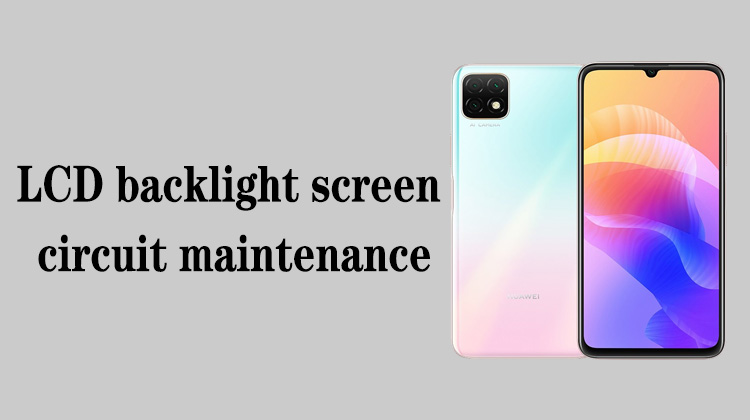1
00:00:01,266 --> 00:00:06,900
In this lesson, we talk about the channel of the handset signal in the circuit diagram
2
00:00:07,933 --> 00:00:14,166
We start with the earpiece and we can go back to find the big audio, or we can find the small audio
3
00:00:16,033 --> 00:00:21,966
Let's take Huawei P40 as an example, Huawei P40 uses HiSilicon's solution
4
00:00:22,633 --> 00:00:26,700
We can start to search from the J3202 earpiece signal
5
00:00:27,366 --> 00:00:34,066
We open Xinzhizao intelligent query system, find Huawei, find P40, and open its drawings
6
00:00:36,733 --> 00:00:40,766
Enter the code name SPK of the handset in the search bar
7
00:00:44,233 --> 00:00:50,000
We have learned about the speaker before, and the code name of the speaker is also SPK PK
8
00:00:51,800 --> 00:00:57,066
If we look along this SPK, this should be the speaker, J3701
9
00:00:58,700 --> 00:01:02,700
But what we're looking for is the handset J3202
10
00:01:05,200 --> 00:01:07,366
Here is RCVOUT
11
00:01:08,000 --> 00:01:13,766
There are several code names for the handset, including RCV, EAR, and SPK
12
00:01:14,966 --> 00:01:17,200
RCV is used here
13
00:01:17,800 --> 00:01:23,966
RCVOUT indicates the signal output of the handset, so here is the line of the handset
14
00:01:26,400 --> 00:01:28,900
We look back from this touchpoint
15
00:01:30,600 --> 00:01:35,300
A SG element and an inductor are connected in series on this line
16
00:01:38,200 --> 00:01:44,800
We need to regard this SG element as a 0 ohm resistor, and its s pole and g pole are turned on
17
00:01:47,200 --> 00:01:50,233
Let's see which circuit a signal comes from
18
00:01:53,366 --> 00:01:58,233
Let's search for RCVOUT_S_P_1 directly to see where it comes from
19
00:02:03,166 --> 00:02:08,233
The other end of this resistor is C3 pin and C5 pin from a chip
20
00:02:10,466 --> 00:02:16,300
This is the detection, the positive detection and the negative detection are the feedback pins
21
00:02:17,166 --> 00:02:20,733
The real output pins are pins E6 and E5
22
00:02:22,033 --> 00:02:25,266
These two are the output of the handset signal
23
00:02:26,800 --> 00:02:29,800
Let's look at the U3201 circuit
24
00:02:30,366 --> 00:02:33,733
It's exactly the same circuit as the speaker
25
00:02:37,033 --> 00:02:42,966
It has reset, I2S bus clock, synchronization and I2S input and output
26
00:02:46,433 --> 00:02:50,466
It also has control signals for the I2C4 bus
27
00:02:51,833 --> 00:02:56,066
Here it has the main power supply and 1.8 volts power supply,
28
00:02:56,066 --> 00:02:58,733
and there are 4 more important capacitors
29
00:03:03,233 --> 00:03:08,366
If these capacitors are corroded by water, they will easily cause a short circuit
30
00:03:09,566 --> 00:03:15,100
This inductor works in a boost circuit, because one end of it is connected to the power supply,
31
00:03:15,100 --> 00:03:18,100
and the other end is connected to SW
32
00:03:21,133 --> 00:03:25,400
Its circuit is the same as that of the small audio U3202,
33
00:03:25,400 --> 00:03:28,933
but the code name of the speaker and the earpiece are different
34
00:03:31,166 --> 00:03:35,066
This is the drive circuit of the Huawei P40 earpiece
35
00:03:36,033 --> 00:03:40,200
It is mainly driven by the small audio U3201
36
00:03:40,733 --> 00:03:45,833
The output signal of the small audio is output from the E6 pin and the E5 pin,
37
00:03:45,833 --> 00:03:52,500
and the two inductors L3263 and L3262 are connected in series in the middle
38
00:03:53,200 --> 00:03:55,366
The final output is given here,
39
00:03:55,366 --> 00:03:59,433
and then 2 inductors are connected in series to this contact
40
00:03:59,700 --> 00:04:01,500
That's all for this lesson






